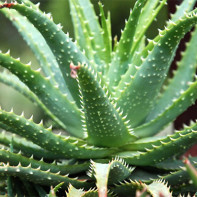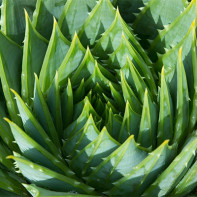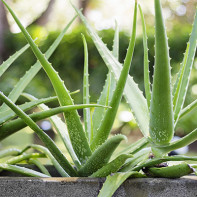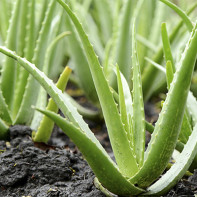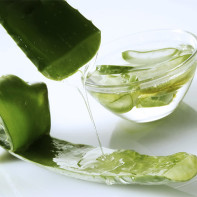Aloe: medicinal properties and contraindications
Aloe is a genus of plants known for their medicinal properties and decorativeness. All representatives of the genus are valuable in non-conventional medicine, and some of them are even officially recognized as medicinal and included in the pharmacopoeia. To use the healing potential of the plant, it is important to know what it looks like, what is included in its composition, and how it can be useful for the body.
- Chemical composition
- What it looks like and where it grows
- Types
- Harvesting and Storage
- What is the difference between aloe and centenarian?
- Therapeutic properties of aloe
- For Women
- For Men
- For Pregnancy
- Breastfeeding
- For children
- When losing weight
- Aloe in folk medicine
- Diabetes mellitus
- In pancreatitis
- For gastritis
- For bowel
- For constipation
- For gout
- For colitis
- For the liver
- For the kidneys
- For hemorrhoids
- For cholecystitis
- For runny nose.
- For oncology
- For coughs.
- Burns
- Bronchitis
- Pneumonia
- Colds
- Chalazione
- Psoriasis
- Prostatitis
- In angina
- For dermatitis
- Herpes
- For tuberculosis
- Otitis
- Allergy
- For varicose veins
- For mastopathy
- Polyps
- For stomatitis
- For hypertension
- For cystitis
- In flus
- See healing compositions with aloe
- Infusion
- Infusion
- Decoction
- Tea
- Salve
- Juice
- Oil
- Candles
- Cosmetic Applications
- Face Problem Skin Mask
- Rejuvenating Mask
- Under eye patch
- Hair Growth Mask
- Aloe application in cooking
- Refreshing cocktail
- Tonic lemonade
- Can we give aloe to animals?
- Contraindications to use
- Interesting facts about aloe
Chemical Composition
Almost all types of aloe - a treasure trove of vitamins and minerals. In aloe tree researchers found more than 70 active ingredients, most of which give the effect of synergy, that is, have an enhanced effect in combination with other substances. Aloe leaves contain 97-98% water. Few plants contain so much water. But this water contains a huge value - the active substances in aloe are present in a high concentration, which provides such a pronounced effect.
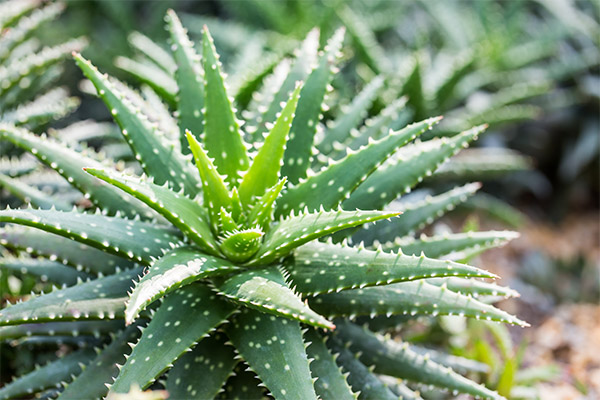
Aloe contains in high concentration such vitamins:
- A (beta-carotene);
- B1;
- folic acid;
- choline,
- B2;
- B3;
- B6;
- Е;
- ascorbic acid.
Some of the listed vitamins have a pronounced effectiveness in the fight against free radicals. They prevent aging and are important components in preventing the development of cancer and inflammatory processes. In addition, aloe contains plant lipid compounds:
- cholesterol;
- lupeol;
- campesterol;
- β-sitosterol.
The plant is also rich in amino acids, which play a role in the proper functioning of most systems and organs:
- valine;
- phenylalanine;
- proline;
- leucine;
- arginine;
- alanine;
- glutamic and asparagic acids;
- glycine;
- histidine;
- Leucine and isoleucine;
- methionine;
- tyrosine.
In addition, mineral compounds found in aloe leaves are:
- calcium;
- chlorine;
- chromium;
- nitrogen;
- potassium;
- magnesium;
- phosphorus;
- zinc;
- sodium;
- copper;
- iron.
Also in a significant concentration there are tannins, enzymes, organic acids of 12 kinds, flavonoids. Thanks to such a rich composition, aloe is recognized as one of the most powerful medicinal plants.
How it looks and where it grows
Aloe is a numerous plant genus with over 500 species. It is found in Africa, the Arabian Peninsula and Madagascar. But many species are common throughout the world as indoor and greenhouse plants. Today classifiers classify the genus of these plants in the Asphodel family, although previously all varieties of aloe were allocated to a separate family.
Most representatives of the genus are succulents, that is, plants capable of retaining a large amount of moisture in the above-ground part. They need this feature in order to survive in an arid climate. The medicinal species of aloe have similar botanical characteristics:
- A voluminous rhizome with multiple small offshoots that are designed to extract moisture from the soil.
- A root rosette as well as sessile leaves on a woody trunk.
- Fleshy leaves with thick skins and mucilaginous sap inside.
- Smooth or toothed edges of leaves, depending on species.
- Flower stalks and inflorescences during the flowering period at the top of erect trunks.
- Height of the plant - from 40-50 cm to 3 m depending on the variety.
Different species have differences, but according to the general signs you can easily determine whether the succulent belongs to the genus Aloe. Moreover, varieties growing in the natural environment have differences from those grown in artificially created conditions. For example, in the natural environment, Aloe arboreal can grow up to 3 m, but in the house - a maximum of 1.5 m.
Types
To date, botanists allocate as many as 500 varieties, but most of them are not available to people living outside the range of the plant. The most popular varieties of aloe:
- arboreal;
- vera;
- spinous;
- dichotomous.
This genus includes not only succulents, but also herbaceous plants and shrubs. In the home it is best to grow centenarian (aloe tree) or vera - they are much more ornamental and valuable than other species.
Collection and storage
Mostly fresh leaves of the plant are used, as well as the juice obtained by processing the above-ground part of the aloe. But it is possible to harvest plant raw materials for the future. To obtain juice, you can cut the leaves all year round, freeze or pasteurize and store in the refrigerator for 30 days.
You can also dry the cake that remains after receiving the juice, grind it into powder and use it to prepare medicines. Store remedies prepared from the fresh juice of the plant can be no longer than 1 week.
What is the difference between aloe and centenarian?
In fact, there are no differences between aloe and centenarian. The fact is that the centenarian is called only one species. This aloe tree is the most common and popular species, which is massively used in alternative medicine as a source of valuable components that have a positive effect on human health.
Aloe arborealis is the official name of the plant, but it began to be called centenarian because of its extremely rare flowering, which can be observed once in 70-100 years.
Centipede is the most popular indoor plant. It has sword-shaped, dense fleshy leaves, the edges of which are covered with sharp teeth. Inside is a thick, transparent, jelly-like sap with a greenish hue. Aloe tree is undemanding and can grow without specific care and fertilizers. The main thing is to water it at least once every 10 days.
Aloe medicinal properties
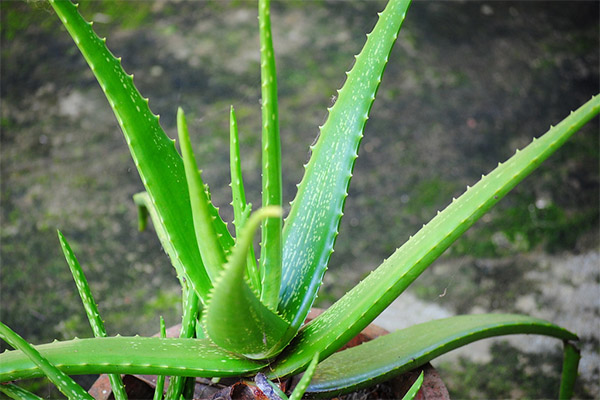
Almost all varieties of aloe have pronounced medicinal properties, which are due to the rich composition of the plant. The universal therapeutic properties include the following:
- anti-inflammatory;
- regenerating;
- immunomodulatory;
- wound healing;
- antibacterial;
- tonic;
- neuroprotective;
- hepatoprotective;
- choleretic;
- cardioprotective;
- diuretic;
- cleansing.
In the treatment of gastrointestinal diseases aloe juice's ability to stimulate the production of digestive enzymes and eliminate inflammation is used. In skin diseases, the anti-inflammatory, antibacterial and antifungal properties of aloe are used. This plant relieves inflammation in cholecystitis, pancreatitis, gastritis, helps normalize digestive function.
Aloe helps to cope with various skin infections, restore many functions in the body. The chemical composition of the plant can have different effects on women and men, depending on age and physiological condition.
For women.
Like most plants that are rich in plant hormones, aloe is beneficial to the female body. It is used in the treatment of diseases of the reproductive system to eliminate pathogenic microflora and stop inflammatory processes. Aloe also has the following therapeutic effects:
- helps stabilize the hormonal background;
- Restores the menstrual cycle;
- Stabilizes the body during menopause;
- Increases libido in women;
- Protects against cancer.
Aloe can also be used in the treatment of breast diseases. For preventive purposes, it is used to strengthen the endocrine system. In general, aloe has a beneficial effect on women's health, stimulates the immune system, its use has a positive effect on the appearance. The main advantage of aloe is its ability to slow the aging process, restore the skin, strengthen the hair and stimulate its growth.
For men
Aloe tree is part of many herbal preparations that are used to treat sexual dysfunction in men. In addition, this type of plant is used in the treatment of prostatitis, to prevent the development of benign and malignant tumors of the reproductive system. Aloe is useful for men as a powerful adaptogen that allows you to withstand heavy loads without harming your health.
Especially valuable is this plant is for men who play sports. It helps prevent pathological processes in the body that develop as a result of excessive physical activity, promotes rapid recovery, reduces the toxic effects of pharmaceuticals that are used by bodybuilders to build muscle mass. In addition, aloe is used in the treatment of urological infections in men and other diseases of the genitourinary system.
In pregnancy
Specialists do not recommend the use of aloe during pregnancy, as this plant contains in high concentration plant analogues of female hormones. These substances can affect the development process of the embryo, and can also provoke bleeding, premature birth, miscarriage. But during pregnancy, aloe is also useful, it can be used externally for skin diseases to take care of it.
During pregnancy, many medicines are prohibited, including antibiotics and antiviral drugs, but aloe can be an alternative. It can be used, for example, for colds to gargle the throat, with a cold to put the juice into the nose, when other drugs can be harmful. It can also be used as an alternative, for example to gargle and gargle with a sore throat, when other preparations can be harmful. Many herbal remedies, although banned during pregnancy, are sometimes prescribed by doctors, but it is important to assess the ratio of the degrees of potential risk and benefit.
When breastfeeding
Aloe in the period of lactation is beneficial for a woman's body, but pediatricians do not recommend using this plant for ingestion, as there are risks for the baby. It is a powerful laxative, contains substances that penetrate into the breast milk and enter the baby's body during feeding. As a result, the infant may develop diarrhea.
Aloe, like other medicinal plants, can provoke strong allergic reactions, which is also extremely dangerous for children under a year old. If necessary, you can use aloe juice externally during breastfeeding. This herbal remedy is used for the treatment and care of breast diseases. In addition, aloe juice can be used to treat and prevent colds during lactation, but it is necessary to refuse breastfeeding for the period of ingestion.
For children
The internal reception of preparations based on aloe is allowed from 12 years of age. Until this age, the plant is used only externally. Aloe juice can be used from the age of 3 years to treat skin diseases, runny nose, conjunctivitis, otitis, stomatitis.
For the treatment of children's diseases do not use concentrated aloe juice, it is diluted with water in a ratio of 1:1 or 1:2, depending on the purpose and age of the child. Before using aloe-based remedies to treat children, an allergy test should be performed. A small amount of diluted juice should be applied to the wrist and watch for a reaction. In case of redness, burning and itching or other unpleasant sensations, you should wash off the product and lubricate the skin area with anti-allergic ointment. If you have an allergic reaction, it is strictly forbidden to use aloe juice.
When losing weight
Aloe is often used by manufacturers of dietary supplements as a component in means for weight loss. Of course, it is much safer and more effective to use the plant in its pure form. First, so you can get a higher concentration of active ingredients, and secondly, fresh aloe juice does not contain chemical toxic additives and has no side effects when used correctly.
Aloe does not just help to lose weight, this plant eliminates the cause of excess weight. Taking the juice of the plant produces the following effects:
- normalizes the digestive function;
- Stabilizes the speed of metabolic processes;
- Cleanses the body and intestines from toxins and waste;
- stimulates the processing of fat tissue.
By taking aloe, you can increase the effectiveness of your workouts many times over. It can also be a source of minerals and vitamins.
Aloe in traditional medicine
The medicinal properties of aloe of different species have been used in alternative medicine for more than 2000 years. This plant is widely used in the therapy of various diseases, but in each case the recipe and scheme of reception is different.
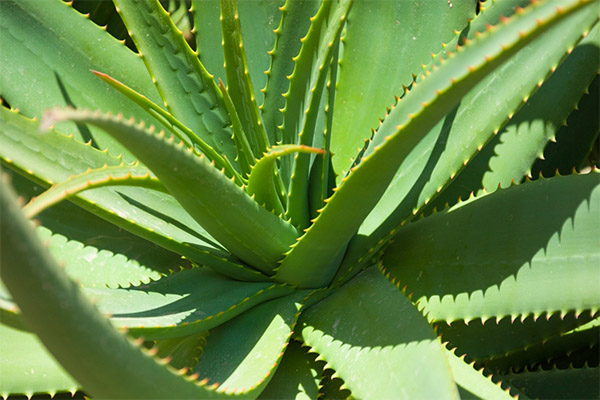
In diabetes
In diabetes, aloe vera is most commonly used. It is important to understand that this plant is not able to cure the disease, but it can improve health, prevent the development of complications of diabetes, significantly improve the quality of life of the patient. Aloe vera regulates metabolic processes, protects the cardiovascular system, helps to maintain a stable blood glucose level even without insulin in the initial stages.
For diabetes, it is recommended to use fresh aloe vera juice, diluting it with cold boiled water (1 tsp. per glass of water). It is recommended to drink the remedy immediately before meals 3 times a day. The course of treatment may be 30 days, after which you need to take a break.
Pancreatitis
Chronic pancreatitis is a rather insidious disease. It is difficult to predict what and when will provoke an attack, so medics recommend adhering to a therapeutic diet (table number 5). Aloe is one of the few plants that can be used to treat pancreatitis. The juice of the leaves when taken internally produces the following effects:
- stimulates the production of pancreatic enzymes;
- relieves inflammation;
- Activates the regeneration of cells of this organ.
In the treatment of the pancreas it is not recommended to use medicines containing alcohol. The ideal is to use a decoction or fresh aloe juice, diluted with warm boiled water. The decoction is prepared in a water bath. You need to take 2-3 medium-sized leaves, pour 600 ml of boiling water and boil for 5 minutes, and then insist under a lid. Drain the liquid through a sieve and take 50 ml 3 times a day. The fresh juice of the plant is also taken three times a day, but 1 tsp. It is desirable to take herbal medicine before a meal.
With gastritis
Aloe in gastritis with reduced acidity is used in combination with fortified red wine. For 0.5 liters of wine you need to take 1 mug of fresh juice, mix, leave for a week in the refrigerator, and then drink 50 ml 2 times a day. For gastritis with high acidity, it is recommended to take pure aloe juice with warm boiled water, 1 tbsp. every morning.
For the intestines
To restore the intestines, for constipation, flatulence and other problems, you can use fresh beet juice with aloe juice in a ratio of 1:1, 2 tsp. 2-3 times a day. You can also boil 1 liter of water with 2 tablespoons of crushed leaves and insist under a lid, and then drink the resulting remedy for 100 ml before each meal.
When constipation
Aloe has a pronounced laxative effect, so it can be used for constipation. If the problem has a chronic nature, it is necessary to undergo a course of treatment with the use of this plant. Fresh aloe juice with warm water is used for constipation. 1 tablespoon of fresh juice should be dissolved in 250 ml of water. Drink on an empty stomach in the morning for 2 weeks.
You can also use an oil mixture made from the leaves and olive oil taken in equal proportions. Take the oil mixture 2 times a day, 1 tsp. with plenty of water. The duration of treatment should not exceed 14 days.
With gout
With gout, aloe helps to quickly remove uric acid salts from the body, as well as relieve pain during attacks. It is necessary to prepare such a therapeutic drink - take 100 ml of juice, 1.5 liters of medicinal table mineral water with carbonate composition and mix the ingredients, drink 100 ml every 2 hours. You can also use aloe juice in its pure form, just drinking it with water.
In colitis.
Aloe vera is best for treating inflammation in the intestines. It is used as a powerful antibacterial and cleansing agent, and the stimulation of the immune system additionally serves to restore the body. To cure colitis, you need to block the acute stage by taking medication and proceed to the use of aloe. It is necessary to mix 1 tsp. turmeric, 1 tsp. crushed black tea without additives and 3 tablespoons of aloe juice or pulp of ground leaves. The resulting remedy is divided into 3 doses and consumed before meals.
For the liver
Aloe has a pronounced hepatoprotective effect, contains substances that stimulate the regeneration of liver cells. It is possible to use this plant in the presence of such indications:
- viral hepatitis;
- alcoholic hepatitis;
- Fatty liver disease;
- cirrhosis.
It is necessary to use aloe in combination with lemon and honey. You need to take 200 g of leaves, 1 lemon, 5 tablespoons of honey. Grind the components on a meat grinder, mix and put in a glass jar, eat 1 tsp. before each meal. For prevention, you can use such a mixture 2 times a year to cleanse the liver and prevent the development of pathological processes. You can also cleanse more often, for example, after a course of antibiotics or a long period of taking painkillers.
For the kidneys
Aloe can be used to treat the kidneys, if there are no large stones in them. But the plant should be taken only after the inflammation will be removed. In acute processes in the tissues of these organs, aloe can only harm, because it has too pronounced diuretic effect. In chronic nephritis, aloe is used to stabilize the work of the kidneys - drink an infusion of fresh leaves of the plant. You need to crush 100 g of leaves, pour 1.5 liters of boiling water, infuse 2 hours and drink 3 times a day for 1 cup.
Hemorrhoids
Aloe in hemorrhoids helps to reduce the size of the nodes, eliminate inflammation, itching, pain, and prevent the development of complications. The treatment uses suppositories made on the basis of aloe juice with coconut oil. You can also make cooling compresses with the juice of this plant 2-3 times a day.
Aloe gel is prescribed even in traditional complex therapy, if there is a chance of cure without surgery. It should be used topically - to lubricate the anus 3-4 times a day. It is also recommended to take the juice of the plant inside, 1 tsp. 2-3 times a day. The fact is that when hemorrhoids are extremely dangerous constipation and inflammation, and the use of the remedy internally will help prevent the development of complications. The herbal raw material acts on the immune system, not only on the blood vessels, so when used internally, it protects the body, stimulates its recovery.
In cholecystitis
With cholecystitis, aloe does not help immediately, it is important to use it regularly for a long time, combining it with a proper diet. To normalize the functioning of the gallbladder, you need to take aloe juice before a meal, 1 tsp. with cold green tea, which tones the walls of the gallbladder and eliminates bile stagnation.
With a runny nose
Aloe is effective in treating the runny nose, regardless of the cause that provoked it. It can be used for sinusitis, maxillary sinusitis, vasomotor rhinitis, cold and allergic runny nose. The effectiveness of aloe has been clinically proven, so the plant is used by pharmaceutical companies to create products that promote rapid recovery of nasal mucosa. There are two ways to use the plant to treat a runny nose.
- Take the fresh juice of the plant, dilute it with cold boiled water or pharmacy saline at a ratio of 1:1. The resulting mixture is injected into each nostril 2 drops 3 times a day for a week.
- It is necessary to mix aloe in equal proportions with calanhoe, prepare the juice and drop it into each nostril 2 drops 2 times a day.
Aloe helps to eliminate infection and inflammation, plant components stimulate cells of the mucosa to repair, in addition, the application of the juice eliminates swelling and stuffiness.
In case of oncology
Cancer is considered a contraindication to the use of aloe, so without a doctor's permission it is strictly forbidden to use this plant. The fact is that aloe is a powerful natural stimulant, and the use of the plant can spur the growth of the tumor. But it can be used, for example, during postoperative recovery or in case of loss of strength associated with prolonged chemotherapy.
Depending on the diagnosis and condition of the body, the dosage is different, which should be clarified with the attending physician. Usually use this plant this way - cut leaves are placed in the refrigerator for 10-12 days, and then put through a meat grinder. An equal part of honey is added to the resulting pulp, mixed and sent to the refrigerator. After a day, the juice is decanted and the cake discarded. The juice is taken 1 tsp. 3 times daily before meals.
With a cough
Aloe blocks inflammatory processes in coughs, liquefies sputum and stimulates the removal of excess mucus from the bronchi. Thanks to the use of aloe it is also possible to eliminate pathogenic microflora in the respiratory tract, spur the defense mechanisms to fight infection. The following recipes are used for coughs:
- Fresh juice is taken by 1 tsp. 4 times a day, drinking hot milk.
- Alcoholic tincture is used for compresses on the chest, first heating it to 35 degrees, so that faster penetration of the active components through the skin occurred.
- Aloe gel is mixed with honey in equal parts, add a pinch of ginger and take 1 tbsp. 4-5 times a day.
Cough treatment should not last longer than 14 days if the problem has become chronic. For the treatment of a cough provoked by an acute respiratory infection, 3-5 days is enough.
In the case of burns
Aloe is indispensable for treating minor burns, such as those caused by careless sunbathing. This plant is a must-have in the kitchen to treat household burns. For example, if the hostess accidentally burned her hand, you can immediately treat the burn with fresh aloe juice, the main thing - do not forget to wash the leaf.
You can also treat extensive burns with aloe. To do this, it is better to use the classic ointment - mix in equal proportions of olive oil with the juice of the plant and rub 2 times a day on the affected areas of the skin. It is not recommended to independently use the juice of the plant for burns of III and IV degree, as in this case requires surgical treatment and there is a high risk of joining infections.
For bronchitis
For the treatment of bronchitis, a universal recipe of honey infusion from aloe is useful. To prepare the medicine, you will need 250 ml of honey and a glass of crushed leaves, preferably ground on a meat grinder. It is necessary to heat the honey to 60 degrees (you can in the microwave or in a steam bath), pour the prepared plant material and insist for 3-4 hours, and then eat 1 tbsp. 2 times a day.
You can also use the alcohol tincture to rub the chest with chronic bronchitis. The procedure should be performed 2-3 hours before going out in the cold.
For pneumonia
To treat pneumonia, you need to use traditional medicines prescribed by the doctor. Aloe can be used only as an auxiliary agent, which will improve blood circulation in the lungs and help the body to fight the infection. It is necessary to use an infusion - brew 20 g of raw materials with 300 ml of water and drink 50 ml when the remedy cools.
Another recipe that is used in the treatment of pneumonia is a wine tincture of aloe with honey. You need to take 500 ml of fortified wine, which contains the maximum dose of alcohol, 10 ml of juice from leaves, twisted on a meat grinder, and 50 g of honey. It is important that the honey is fresh, not sugared. All the components should be mixed, and then soak for a day in the refrigerator. Take 40 ml 2 times a day.
With a cold
With a cold, aloe is used as an immunomodulatory and antiviral agent. It should be taken with warm boiled water. You need to cut a leaf, chop it on a cutting board and pour 0.6 l of boiling water, insist 15-20 minutes, and then drink 150 ml every 2-3 hours, at least 4 times a day.
You can use quite a tasty medicine, which even children will like. You need to take 50 ml of juice, 1 egg, 2 tablespoons of sugar and 2 tablespoons of lemon juice. Prepared raw materials whipped in a mixer and serve as a cocktail. This powerful blend lowers fever, fights inflammation, helps with sore throats and coughs, and strengthens the immune system.
For Chalazion.
To treat chalazion, a solution of juice with boiled water is used, it should be injected into the sore eye every 3-4 hours for 1 week. You can also wash the eyes with absorbent cotton soaked in aloe juice, diluted in equal parts with warm boiled water. It is important to test the product before use - if it causes redness or irritation, it is not recommended to use it for the eyes.
In psoriasis
Psoriasis is quite difficult to cure with aloe alone, but it certainly helps to recover faster, especially in exacerbations. To make the medicine, you need to take the following ingredients:
- 50 g of goose fat;
- 3-4 leaves of aloe;
- 1 tsp. cocoa butter.
It is necessary to melt the fat in a steam bath, twist the leaves through a meat grinder and send the same. Boil for 30 minutes, and then strain into a clean container (using sterile gauze) and rub the ointment on the affected skin 2-3 times a day.
With prostatitis
Witch hazel combined with aloe and golden mustache is an effective complex to combat common male problems. It is necessary to prepare a mixture of juice from the leaves of aloe and golden mustache, as well as to brew witch hazel bark and fresh leaves (2 tablespoons per 1 liter of water). Strain the finished infusion and mix with 1 cup of juice, shake and drink 200 ml 2 times a day.
Also, experts in the field of traditional medicine recommend using aloe vera in combination with additional sources of vitamins and minerals. You can make a healing mixture of such ingredients:
- 200 g fresh aloe leaves;
- 50 g of apricots;
- 50 g dates;
- 50 g prunes;
- 20 g almonds;
- 20 g walnuts;
- 50 ml of honey.
It is necessary to take all the ingredients listed above, grind them on a meat grinder, and then simply mix them with honey. The resulting vitamin and mineral mixture put in a clean, dry jar and take 1 tsp. 2 times a day.
With sore throat
When treating angina, aloe juice is used as a local disinfectant and anti-inflammatory agent. From it is prepared a solution for gargles, you can also additionally take it inside as a powerful immune stimulant.
Aloe preparations are effective for sore throat. They are widely used by internists, pediatricians, otolaryngologists. But you can also cure angina with home remedies, prepared on the basis of the plant. Here are recipes for sore throat.
- Take a glass of warm boiled water, add 1 tsp. of aloe juice and 2 drops of tea tree oil. Gargle your throat about 5-7 times a day.
- Boil with boiling water (500 ml) 1 tbsp. chopped leaves and infuse. Gargle your throat at least 5 times a day.
- Boil 1 tbsp of leaves in 1 liter of water, take 50 ml of the drink 3 times a day.
- For gargling, take 200 ml of water, 0.5 tsp. salt and 1 tbsp. aloe juice. Repeat the procedure 3 times a day.
- Mix 1 tsp. each of calanhoe, aloe and golden mustache juice, add 200 ml of warm water and use to gargle the throat 4-5 times a day.
With these recipes sore throat of bacterial or viral nature passes in 3 days. But in some cases there may be complications, so it is better not to refuse to go to the doctor and use herbal medicine as an additional component of therapy.
To stimulate the immune system to fight the bacterial or viral infection that triggered the inflammatory process in the throat, you need to take internally 1 tsp of juice before breakfast.
For dermatitis
Dermatitis is treated with an ointment prepared on the basis of aloe. It is prepared from the fresh juice of the plant and olive oil, in a ratio of 2:1. You can also prepare an ointment with an alcohol tincture, but use it only if there is no damage to the skin. It is also good to wipe the affected areas of the skin with the pure juice of the plant or decoction.
You can prepare an infusion from a collection of different types of plants and use it for baths, if the affected significant part of the skin is more than 30%. You need to take 2 tablespoons of crushed aloe leaves, 10 g of ground calamus root, 10 g of chamomile chamomile and 5 g of St. John's wort inflorescence. The collection pour 1 liter of boiling water, leave for 1-2 hours and use for baths. You can dilute with water.
Herpes
Herpes is a disease that is provoked by a viral infection. The difficulty in treatment is that there are no medicines that can directly affect the virus. That is why only symptomatic drugs are used. Aloe juice is one of the most effective remedies and can be used both externally and internally. Fresh juice should be applied to sores and blisters that appear on the mucous membranes. Inside take 1 teaspoon of juice 3 times a day. This will spur the immune system to fight the viral infection, as well as accelerate recovery.
In Tuberculosis.
With tuberculosis, aloe juice is taken for a long time, but only in conjunction with the main therapy. Without antibiotics, it is impossible to cope with the bacteria that cause this disease. Aloe is used as an immunomodulatory, anti-cough and anti-inflammatory agent. It is necessary to take 1 tbsp. spoon once a day on an empty stomach, in the morning, drinking plenty of water. The duration of treatment - at least 1 month, but no more than 60 days.
Also used a remedy made from goat fat and aloe leaves. At 60 degrees in the oven to melt 200 grams of fat and a cup of chopped leaves. The remedy to simmer for 30 minutes, and then strain and pour into a clean jar. Use the resulting mixture to rub into the chest before going to bed.
In otitis media
Aloe is effective for otitis media of bacterial, viral and fungal nature. The plant can also be used to prevent or eliminate complications resulting from otitis media. Aloe juice is used in pure form for otitis externa, as well as in inflammation of the middle ear, if there are no complications (perforation of the eardrum, purulent discharge). Aloe juice must be soaked in a cotton turunda and inserted into the sore ear for 20-30 minutes. The procedure should be performed 3-4 times a day.
With purulent otitis and complications can use aloe juice mixed with boric alcohol in a ratio of 1:1. This mixture is well shaken and pipetted into the ears 2-3 drops 4 times a day. You can also use an alcoholic tincture of aloe. You must take a jar or bottle of dark glass, fill it one-third full with chopped fresh aloe leaves, infuse for 2 weeks and top it up with medical alcohol and use it for eye drops 2-3 times a day.
Allergies
Aloe helps to quickly and effectively cope with allergic reactions, so it is used as an aid. Depending on the clinical symptoms of allergic reactions can be used it in different ways. If it is a skin reaction - the juice should be applied to the affected areas 2-3 times a day, and take 1 tsp in the morning and evening. If the allergy causes runny nose and lacrimation, it is necessary to drop into the nose and eyes the juice of the plant, diluted with water in a ratio of 1:1.
With varicose veins
Varicose veins are treated with aloe juice in the early stages. It is necessary to use an ointment prepared on the basis of this plant. To prepare the ointment you will need the following ingredients:
- 50 ml of hemp oil;
- 50 ml of linseed oil;
- 50 ml of aloe juice;
- 1 tablespoon of dried garlic powder.
You need to mix all the ingredients and keep the ointment for 2 days in the refrigerator, and then use it to rub on problem areas 2 times a day.
In mastopathy
With mastopathy, aloe juice can be mixed with golden mustache juice and honey, soak the resulting mixture in gauze tampons and apply to the painful breast. It is also recommended to take this herbal remedy orally, 1 tbsp. 2 times a day. It is forbidden to use this medicine during breastfeeding.
When polyps
To eliminate polyps, you need to mix aloe juice with sea buckthorn oil in equal parts and take ½ tsp. 3 times a day. If polyps are inflamed and cause discomfort, you can put fresh juice of the plant in the nose 2-3 times a day. For children, this remedy is used in diluted form, adding saline or boiled water in equal proportions.
In stomatitis
Sores and wounds in the mouth arise due to fungal or bacterial infection. Aloe not only copes with pathogens, but also stimulates the recovery of the mucosa. To cure stomatitis, you can use the juice of the plant. There are three effective ways.
- Dab wounds in the mouth with fresh aloe juice after each meal, at least 3-4 times a day.
- Take 100 ml of warm boiled water, add 1 tsp. of juice and mix. Rinse your mouth 3 times a day.
- Take a young leaf of Aloe tree, rinse and cut. On the inside, put it on the sores in the mouth and walk with it for 20-30 minutes, repeating a couple of times a day.
You can also combine the juice or infusion of aloe with decoction of tea rose petals and twigs. It is good to use fresh juice in combination with plantain juice and honey, if stomatitis provoked by a fungal infection.
In hypertension.
Aloe helps to clear the blood vessels and eliminate spasms that provoke an increase in blood pressure. A mixture of aloe, walnuts and honey can be used for hypertension. You need to grind on a meat grinder 5 large aloe leaves and ½ cup of walnut kernels, add 2 tablespoons of natural honey, mix and send to the refrigerator. After 12 hours, take the resulting mixture by 1 tbsp. in the morning and evening.
With cystitis
Aloe in cystitis is used to prepare healing baths and infusion. You need to pour 1 liter boiling water 2-3 crushed leaves of the plant, to insist 2 hours and drink 100 ml 3 times a day. Baths are also made from the same infusion at least twice a day.
This is not the only recipe that is used in the treatment of cystitis. You can also try to prepare a remedy using milk. To eliminate the pain of cystitis, you need to put through a mincer 4-5 leaves of aloe and ½ cup of almonds. Separately, mix milk with ground almonds and simmer in a water bath for 15 minutes. Pour this mixture from the aloe leaves and soak 30-40 minutes, drink 1 tbsp. 4-5 times a day, store in the refrigerator.
When flus.
Aloe is used for flus, as well as for rapid recovery of gum wounds after tooth extraction. To eliminate inflammation and relieve pain, you need to cut a small piece of washed aloe leaf, the inner side (where the juice) dip it in table salt and apply to the gum. To eliminate pain and bleeding after removal, as well as to accelerate tissue repair, you just need to apply the cut leaf without salt for 10-20 minutes 2-3 times a day.
Seeing healing compositions with aloe
There are a lot of recipes and ways to prepare medicines from this plant. Probably no other type of medicinal plant is used as massively as aloe. But there are also traditional recipes that have not lost their relevance for several centuries. It is them that experts recommend using for preparing home remedies.
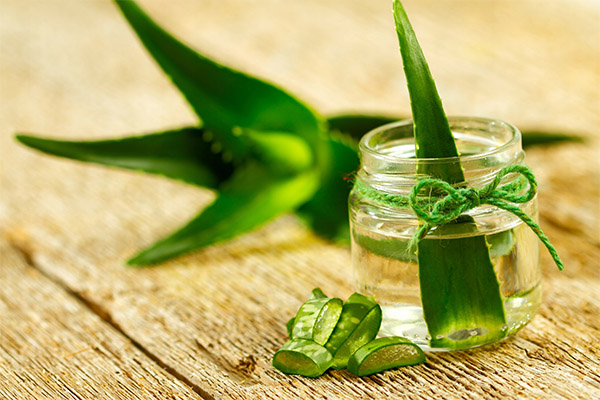
Infusion
To prepare an aqueous infusion, you can use fresh or dried aloe leaves. Usually take 2-3 tablespoons of crushed raw materials for 1 liter of boiling water. It is desirable to steep herbal raw materials in a quality thermos, which can maintain the temperature for 6-7 hours. This will not only extract the maximum benefits of raw materials, but also maintain the temperature of the infusion, because it is desirable to drink it warm, so the active components are quickly absorbed by the body.
There is another option for preparing an infusion. It is necessary to take dried raw materials - cake, which remained from the preparation of juice. 2 tbsp. Tons of dried raw materials to brew 2 cups of boiling water, to insist under a lid for 2 hours and drink 20-30 ml before each meal.
Tincture
Aloe alcohol tincture can be prepared with alcoholic beverages or with medical alcohol. There are many recipes, which one to choose is a personal matter for everyone. The result is the same - the alcohol contained in the drinks extracts all the useful substances from the plant material and retains them for a long time. Below are described 3 recipes for making tinctures from this plant, which can be useful to everyone.
- Take 250 ml of quality brandy without chemical additives, pour 100 g of crushed leaves and add 1 tablespoon of honey. Insist in a dark place for 14-15 days, and then strain and drink 20 ml 2-3 times a day.
- The classic version - 100 grams of crushed raw materials in 400 ml of vodka, incubate for 2 weeks and use as directed. It is important to strain the tincture and store it in the refrigerator.
- You can prepare a tincture with wine. You must mix 700 ml of wine and 200 ml of pasteurized aloe juice, add 3 tablespoons of sugar syrup (not sugar, because it will begin to ferment), insist in the refrigerator for a day and drink 50 ml.
Tinctures in alcohol are contraindicated in various liver diseases, nervous system disorders, as well as hypertension. In other cases, you can use remedies that include alcohol.
Decoction .
In preparing the broth used 2 tablespoons of aloe leaves in 0.5 liters of boiling water. Boil the raw material should not be more than 5 minutes after boiling water. Then strain it with ordinary gauze or bandage.
Tea
Use in addition to other remedies, you can also use tea. It is prepared from dried or fresh leaves of the plant. You can buy a ready-made collection in phytopharmacies, stores that specialize in the sale of dietary products. If you have in the house is already prepared raw material to make tea, you need to pour 250 ml of boiling water in a cup and add 1 tsp. grinded collection, and then infuse it for 5-7 minutes.
Aloe tea is most in demand in the therapy of diabetes and in the prevention of colds. It can be used to stimulate brain activity, as well as a cure for a lingering cough. Consumption of 3 cups of the drink a day helps people who are already sick, but for preventive purposes, it is better to drink tea once a day.
Because of the rapid decrease in blood sugar levels after drinking the tea, negative effects such as glycemia, diabetic coma may develop. You should consult with your doctor before using it. You can drink the tea for 30 days, and after that you need to take a break for at least 3-4 weeks.
The ointment
Ointment from the juice - the most popular remedy based on this plant, it helps to cope with a number of diseases, can replace some medicines. The ointment has such therapeutic properties:
- eliminates bacteria, fungi and viruses;
- relieves inflammation;
- soothes pain;
- soothes;
- normalizes blood circulation;
- cleanses the body of toxins;
- relieves spasms;
- fights coughs;
- prevents complications from colds;
- stimulates the immune system to fight infections;
- protects cells from damage.
This remedy is an effective pain reliever and anti-inflammatory remedy for rheumatism, bone pain, muscle pain, and rashes. It is important to know, despite its therapeutic potential, the ointment can be dangerous. It is not recommended for therapeutic use on open wounds. The ointment can be toxic and dangerous, especially for children. It is important to consult a doctor before using this natural product to avoid undesirable effects.
Juice
Aloe juice is easy to prepare with a blender, meat grinder or juicer. The finished product can be stored in the refrigerator no longer than 5-7 days. It is advised to boil it together with an equal amount of water and close tightly with a lid. Such juice can be stored for up to 3 weeks. You can also freeze the remedy, then it will retain its properties and freshness for a month. It is very convenient to freeze the liquid in ice molds, and then transfer the finished cubes into vacuum bags portion by portion.
Butter
You can prepare an effective oil extract from the plant, which is usually used externally to treat skin diseases. You need to grind aloe leaves into a pulp, pour 1 cup raw material in 2 cups of hot cooking oil and kept under a closed lid for 3 days, and then strain and use. Aloe oil helps to cope with burns, wounds, pimples and allergic rashes. It can also be used for rubbing joints and compresses for pain. The oil of this plant can also be used as the main ingredient for creating home care cosmetics.
Candles
To prepare aloe candles, you can use vegetable oils, paraffin and natural wax as a base. It is also necessary to use a medicinal oil extract of this plant. Such an extract mixes well with the base. To prepare candles according to the classic recipe, you need to take 30 g of Vaseline, 10 g of cocoa butter, 10 g of beeswax and 50 ml of oil extract. Melt the wax and oil, heat Vaseline, mix all the ingredients and pour into molds, then use as directed.
Aloe-based suppositories are used for hemorrhoids, anal fissures, constipation and bowel obstruction. They also help to alleviate inflammatory processes in the organs of the reproductive system in women.
Its uses in cosmetology
Two varieties of aloe are widely used in cosmetology. Tree and aloe vera are the most popular plants for skin and hair beauty care. These plants are used by well-known cosmetic brands to create highly effective caring, healing and rejuvenating cosmetics. You can use herbal raw materials to prepare masks at home.
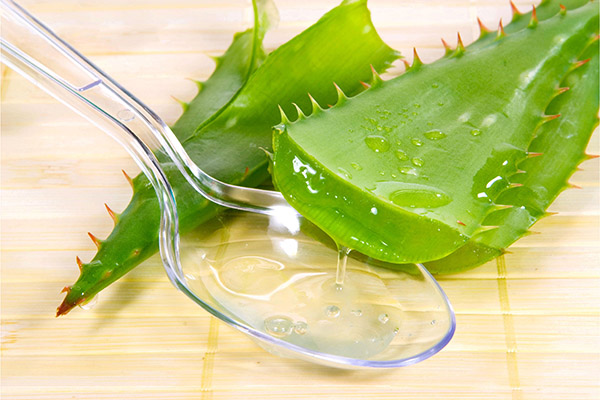
Mask for problematic facial skin
To get a revitalizing, antibacterial and anti-inflammatory remedy from aloe juice, add 4 drops of tea tree essential oil and 5-10 drops of lime juice to 1 tsp. product. Apply the product to cleansed skin and leave for 10 minutes, then rinse and use a matting cream.
Rejuvenating Mask
To prepare a rejuvenating mask, take 1 tsp. of aloe juice, add 5 drops of rosemary essential oil, mix and apply to facial wrinkles. The mask should be performed every other day, to quickly cope with wrinkles. As a preventive measure, it is worth doing every week.
Eye patches
You can use aloe as a means to eliminate circles under the eyes. To do this, you need to soak a cotton pad with juice, cut it in half and place it under the eyes for 10 minutes. After the procedure, you need to clean the skin and apply a nourishing cream. You can mix aloe juice with green tea and use it to soak the patches. Such a product not only refreshes and brightens the skin, it strengthens eyelashes, normalizes blood circulation, prevents the appearance of expression lines.
Hair growth mask
For hair of medium length, take 2 tablespoons of aloe gel, 1 egg yolk and 10 grams of olive oil. Mix all the ingredients and rub into the scalp and distribute the rest of the mixture on the entire length. Rinse the mask after 30-40 minutes, repeat every 3 days. The main rule - when applying should not cause burning or other unpleasant sensations.
Aloe application in cooking
Aloe vera juice is used in cooking, and in some countries is considered one of the most popular products. This culinary ingredient provides the body with a complex of vitamins, minerals, prevents colds, relieves fatigue. There are two popular recipes for drinks based on this plant ingredient.
Refreshing cocktail
To prepare it, you will need the following ingredients:
- 100 g of jelly aloe juice;
- 300 ml of orange juice;
- 200 ml of mineral water;
- 2 tablespoons of honey or sugar syrup.
You just need to mix everything and cool, and then pour into glasses and serve.
Tonic lemonade
To refresh yourself in the heat and replenish the loss of minerals, you can use a lemonade based on aloe. To make it, you need the following ingredients:
- 3 tablespoons of the juice of the plant;
- 1 tbsp. honey;
- ½ cup lemon juice;
- 1,5 l of carbonated water.
Before serving, cool and strain the drink, as it may have sediment. You can also garnish it with ice cubes and mint leaves.
Can I give aloe vera for pets?
Since aloe vera has beneficial effects on human health, it also affects animals. The leaves of this succulent contain nutrients and ingredients that benefit the skin, coat and immune system. Aloe vera is not a cure in itself, but it does stimulate living organisms to repair themselves without side effects. Here's when aloe can be used for animals:
- skin diseases;
- burns;
- digestive disorders;
- immunodeficiency;
- Eye and ear infections.
The main thing is to make sure first that the animal is not allergic to this plant.
Contraindications to use
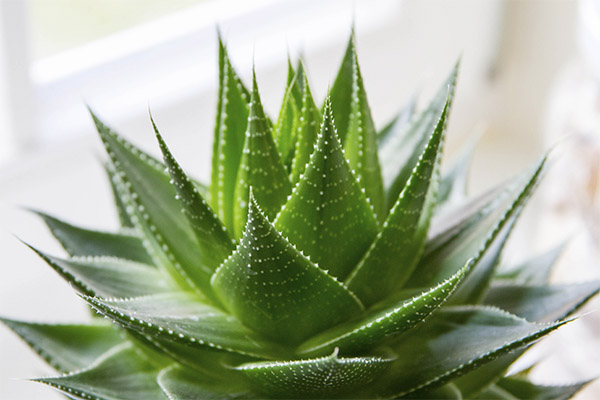
Aloe is not always beneficial, it can be harmful if used in the presence of contraindications. Because of the powerful effect on all systems of the body, the juice of this plant has a significant list of contraindications. In the presence of certain diseases, aloe is contraindicated for both adults and children. Categorical contraindications include such diseases and body conditions:
- tumors of various localizations (both malignant and benign);
- Blood clotting disorders, susceptibility to bleeding;
- gastric or intestinal ulcers;
- cystitis in an acute stage;
- acute diseases of gastrointestinal organs;
- occlusion of the ducts of the gallbladder;
- kidney stone disease;
- cystitis in the acute stage;
- pregnancy.
The main contraindication is an intolerance to this plant, a hypersensitivity reaction. Aloe can provoke strong allergic reactions in sensitive people, even if applied in small amounts.
Interesting facts about aloe
Aloe is one of the most amazing plants, which is considered quite popular. However, there are facts about this plant that are not known to everyone.
- Most species of aloe have never been grown in the CIS countries, they can not adapt to life in such climatic conditions.
- In regions with mild climates, aloe can be planted outdoors.
- The more sunshine, the more often the plant will bloom.
- Contrary to popular belief, aloe flowers can be not only red and pink, but also white, yellow and peach.
- In Japan, aloe is not just a medicinal plant, but the same food as in the CIS countries, for example, green onions.
As you can see, aloe is a useful plant that can help with many diseases. If you use this flower properly, you can restore health even with the most severe conditions.
«Important: All information on this site is provided for informational purposes only. purposes. Before applying any recommendations, please consult with a specialist. specialist. Neither the editors nor the authors are liable for any possible harm caused by materials."

